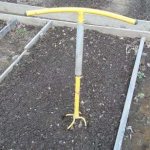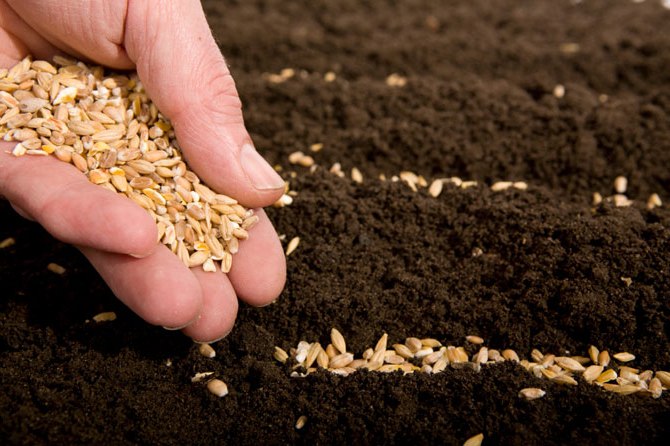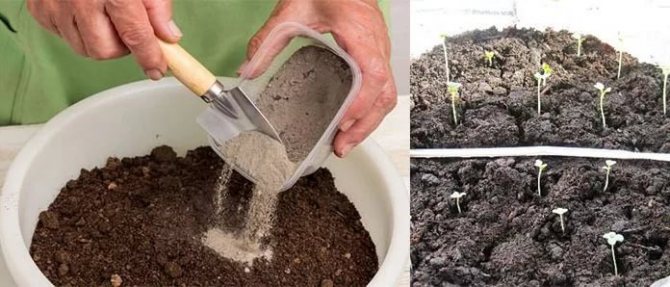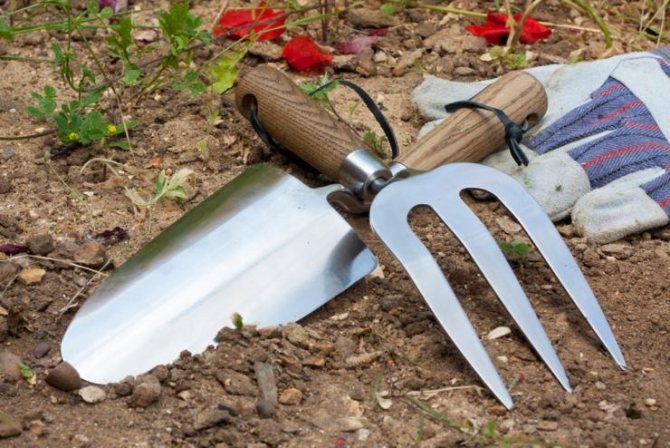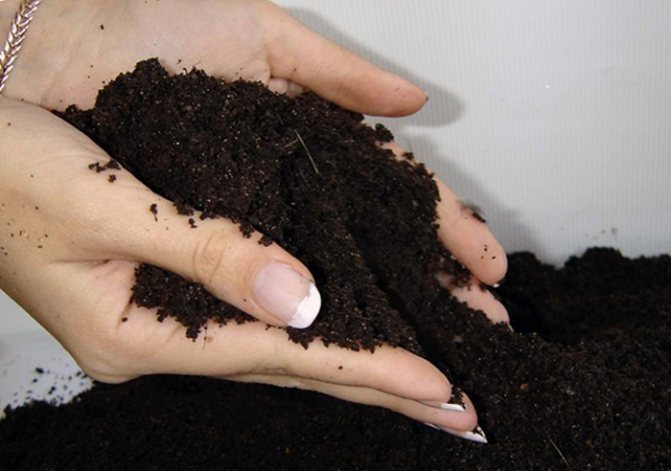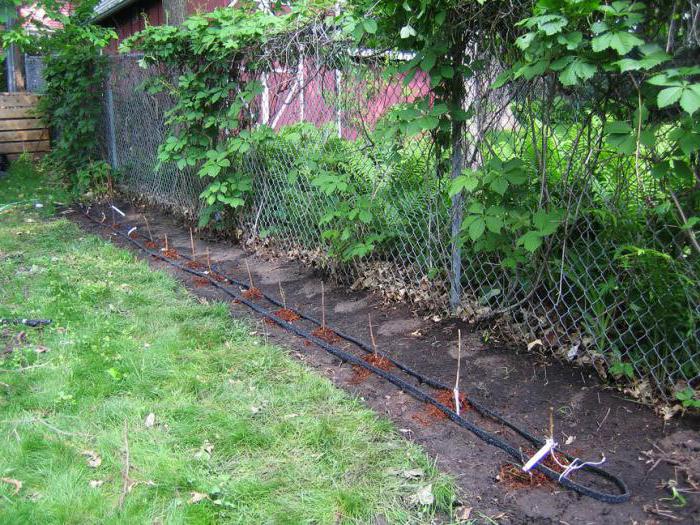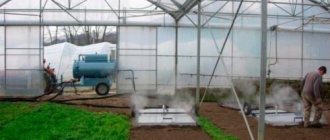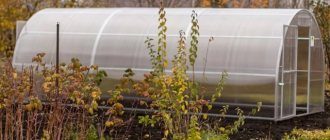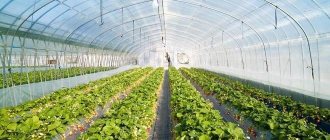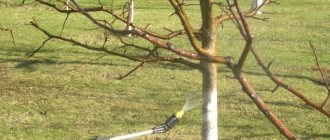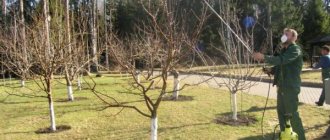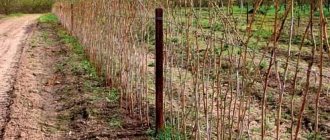Autumn is coming - it's time when summer residents and gardeners have already harvested and begin to think about how to make the next summer fertile and fruitful. What can affect the yield decline? This is the wrong neighborhood of vegetables, herbs, root crops, soil poverty in mineral salts, which means a lack of fertilizers, or the whole thing may be in soil diseases and pests. In any case, it is necessary tillage in autumn from diseases and pests. How to do it correctly?
Treatment of the soil in the fall from diseases and pests
general information
Autumn tillage consists of several very important stages. All of them are necessary to preserve fertility, to enrich it with a sufficient amount of micronutrients, etc. And if our ancestors cultivating the land in the fall, immediately after harvesting, was reduced to only digging, and sometimes spreading over the manure area, today the culture agriculture has advanced far enough. Experienced gardeners have learned not only to take into account the type of soil and the level of its acidity, but also know how to deal with the pests living in it - in a word, to do everything that our grandfathers and grandmothers did not even know about. And in order for the preparation for the winter to bring maximum benefit on the site, this work must be carried out in accordance with all the canons. It is imperative to dig up the ground, improve its structure, apply fertilizers, etc. How to cultivate the soil in the fall, how to carry out this process, what stages this work consists of - all this will be discussed in this article.
Possible soil problems in the fall
It is necessary to cultivate the soil in the fall every year, but in certain circumstances it is simply necessary to do this. Sometimes in a certain area, the yield drops sharply, which indicates various problems of the soil:
- pest infestation. They can be small (aphids, ticks) and large enough (moles, slugs, bear, shrew and others). Many of them hibernate well (lay eggs, which are buried deep underground, wake up in spring, begin to destroy the crop). Young plants in spring are most susceptible to attack by parasites and pests;
- damage by bacteria, fungi. After harvest, the spores of pathogenic microorganisms remain in the soil. Some may die from the cold, but most of the successfully overwintered, will begin to destroy the future harvest. The main sign of infection is the appearance of black, white spots on the leaves of plantings;
- exhaustion. As the same plant grows on one piece of land, the soil gives off useful substances and minerals. The land is depleted, it loses its fertility. This situation is characterized by unreasonable death of plants, a small harvest;
- the presence of weeds. There are weeds on any garden bed, but in large quantities these plants interfere with the normal growth and development of a full-fledged crop.
Regular maintenance of the soil will help to overcome these problems, especially in the autumn period of the year.
Look at an overview of the most effective remedies for cockroaches in an apartment, as well as find out the rules for their use.
What causes bedbugs in an apartment and how to get rid of blood-sucking parasites? Read the answer on this page.
After harvest
When the last fruits and vegetables from the site are collected and sent for storage, the gardeners begin the last final phase of work. Autumn soil preparation and cultivation are carried out immediately. You can start work both during harvesting and immediately after that. You should not postpone these manipulations for a long time, because even for a short period, a variety of pathogenic microorganisms - parasites that will infect the entire soil - can settle in the organic residues. Fog and autumn rains will also contribute to their spread.
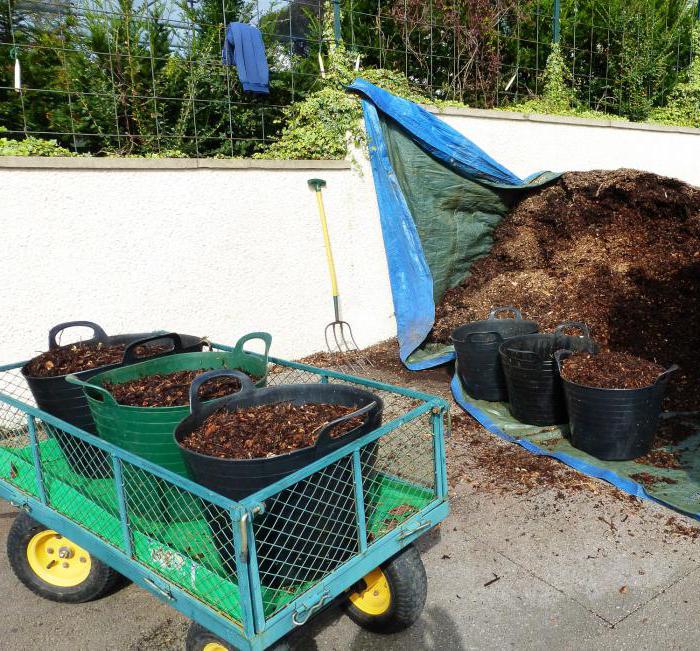
To begin with, all weed plants must be removed, and in such a way that no seeds remain of them. All residues of garden crops are also removed. If the stems of the plants are already dry, then they can simply be burned on a non-rainy day. Experienced gardeners even use the resulting ash. They add it to the ground as fertilizer while digging a vegetable garden or fill it in a compost heap.
Removing weeds, as well as burning roots, tops and stems, helps to destroy pathogens of various diseases and those pests that remain on the plant. If the culture has clear signs of infection, then it should be burned away from the garden, and the ash should not be used, but destroyed by burying it in a hole outside the plot.
Weeds and pests
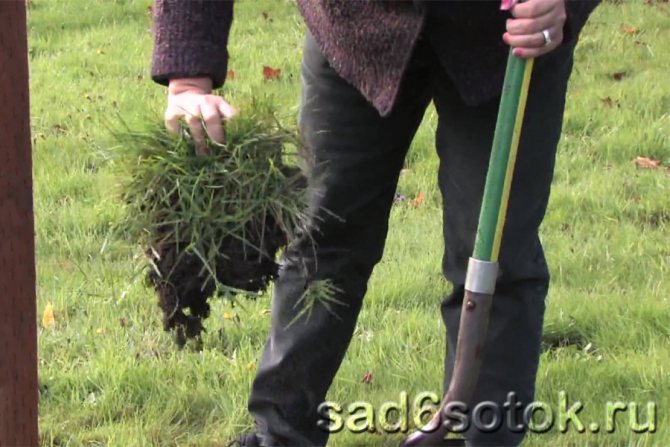

Weed control
Our plots differ greatly in the number and species composition of weeds. And we must decide how to overcome them. Which ones to dig with a pitchfork, which ones to just cut down and not let the seeds fall apart. And which will become less after digging. A separate conversation about areas where there are many root-sucking perennial plants, such as creeping wheatgrass and creeping grass. In the fight against them, the shovel is a bad helper. When digging, we will inevitably cut the rhizome into separate pieces with buds, that is, we involuntarily cut the weed, achieving the opposite effect to the expected one. Here it is better to use a pitchfork and a rake, removing and "combing out" rhizomes from the ground, which can stretch meters deep. And it is difficult to eradicate the wilting and wheatgrass, and the harm from them is considerable. They not only oppress cultivated plants, but give shelter and feed to malicious pests. Wheatgrass is a favorite food and bait for the wireworm. On the dream, the whitefly feeds and reproduces - the scourge of greenhouse plants. In the open field, it also hurts, but in the greenhouse it has the best conditions for reproduction, and being numerous, it is capable of not only parasitizing, but destroying cucumbers, tomatoes and flowers.
It would be nice to think about our enemies and allies from the animal world. If the pests do not give us much trouble, restrained by natural conditions, it is better to keep our interference to a minimum. If hordes of slugs, wireworms, Colorado beetles, May beetles, mice and other harmful animals settled down in our garden for the winter, it would be good to disturb it with a late autumn digging. Beetles and larvae, which have already lost their mobility, will freeze when they are brought to the surface, and disturbed mice will leave their homes in search of a calm “abode”.
Where to begin
Autumn tillage should begin with lightly loosening the top layer with a rake. This process should be carried out on each bed separately after all the bearing crops have already been removed from it. It should be borne in mind that after about a week, weed shoots may appear on this place. They also need to be destroyed. To this end, experienced gardeners use the Fokin flat cutter, which crushes their stems and roots, while simultaneously loosening the ground. In general, there is an opinion that the shoots of weeds that appear after the removal of plant residues are not at all dangerous, since they, as a rule, die from winter frosts, and those that survive can be removed already by loosening the soil in spring. Nevertheless, many gardeners remove them. Such preparation for winter leads to rapid self-healing of the soil.In addition, crushed weed greens can serve as a very valuable natural supplement.
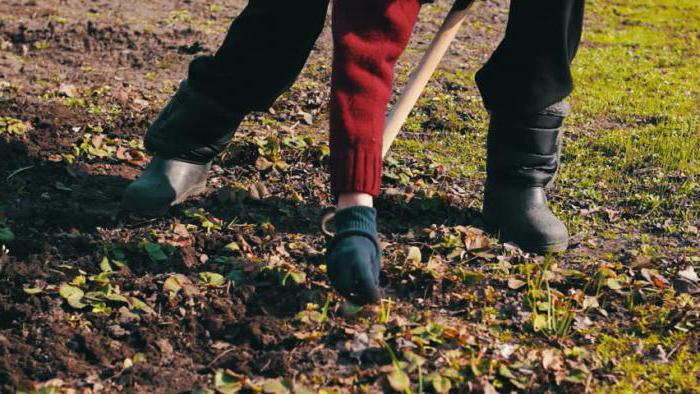

Soil preparation
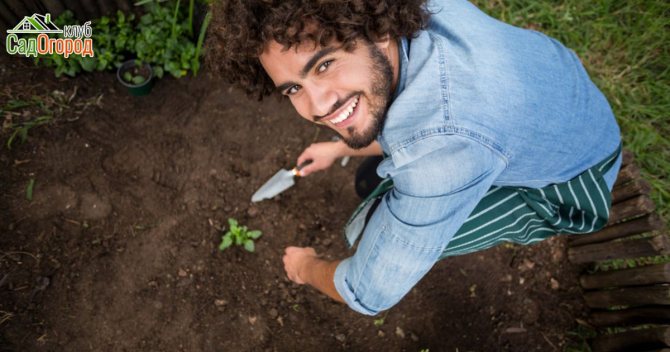

The most favorable period for preparation is from the second half of September to the beginning of October. The main thing is to be in time before long rains and a steady cold snap. You should start preparing the soil by cleaning it from weeds and tops. In the remaining dry grass, mice and other enemies of summer residents spend the winter with pleasure. When the collected garbage is burned, ash will remain, which is useful for fertilizing the soil when digging.
Having removed the weeds, it is worth loosening the ground. A rake would be an ideal option for this. Loosening of the top layer of soil promotes the germination of weed seeds, which are then harvested by harrowing.
Experts advise using the Fokin flat cutter. With it, it is possible to loosen the soil and get rid of weeds at the same time. Surviving weed shoots can be removed by repeating the loosening procedure in the spring. In the future, it will be possible to forget about such tenacious weeds as wheatgrass, coltsfoot, dandelions, if this work is carried out regularly.
Digging the soil


Whether or not to do the autumn digging, it is impossible to say for sure. Proponents of natural farming declare the senselessness of this process, suggesting that we limit ourselves to spreading fertilizers over the surface.
Qualified agronomists associate the need for digging with the characteristics of soil types. Deeply cultivated soil does not need to be dug up, it is enough to loosen it. And the area with clay soil, or not cultivated for a long time, definitely needs to be dug up.
Areas planted with fruit trees must be dug up very carefully. In autumn, some summer residents loosen the tree trunk with a bayonet, thus damaging the small roots in this layer of soil. This leads to the appearance of overgrowth and will weaken the tree itself.
There are two ways of digging soil: dump and dump-free.
The first is in overturning a clod of earth and closing the upper layer to a depth equal to the shovel, thereby leaving no chance for the larvae of harmful insects and weed seeds to successfully overwinter.
In the second option an earthen lump is dug in and left in its place, preserving the natural balance of microorganisms in the soil.
Regardless of the choice of digging method, do not break the resulting clods. Otherwise, the soil will freeze and will not be saturated with melt water in spring.
Aeration


You can saturate the soil with oxygen by aeration, creating holes with a rake or pitchfork. Progress does not stand still, and for aeration, special devices have been created to facilitate this process for the summer resident. There are two types of such devices: motorized and mechanical.
Mechanical attachments include roller rakes, boot aerators, and rake aerators. If everything is clear with a rake, then boots with spikes will allow you to process the soil while walking around the garden. Walking along the site in such shoes, the summer resident makes holes in the soil to saturate it with oxygen.
For gardeners keeping up with the times, there are motorized aerators, both electric and gasoline. This technique greatly simplifies and speeds up the process. Gasoline aerators do not need a wire and are more powerful. They are chosen more often, although they cost an order of magnitude more expensive than their electric counterparts.
The use of a cultivator and walk-behind tractor
![]()
![]()
Most of the farmers prefer mechanical tillage. This increases the yield and helps bring back abandoned, uncultivated and weedy areas. This agronomic technique helps to crush the soil as much as possible, creating an excellent environment for the development of the root system.
Before starting work with a cultivator, the soil must be plowed.And in this the walk-behind tractor will be an excellent assistant. Especially when it comes to an uncultivated, turfed area. With this treatment, the green part of the plants is mixed with the soil.
The range of motoblocks is quite wide, and in almost every model it is possible to use various attachments. For example, a cutter is suitable for the soil for planting vegetables. It makes the soil finely lumpy, perfect for use in greenhouses. The milling cutter is not applicable to open ground due to the large number of factors that affect soil fertility. The recommended rotation speed of the cultivator cutter is up to two hundred revolutions per minute.
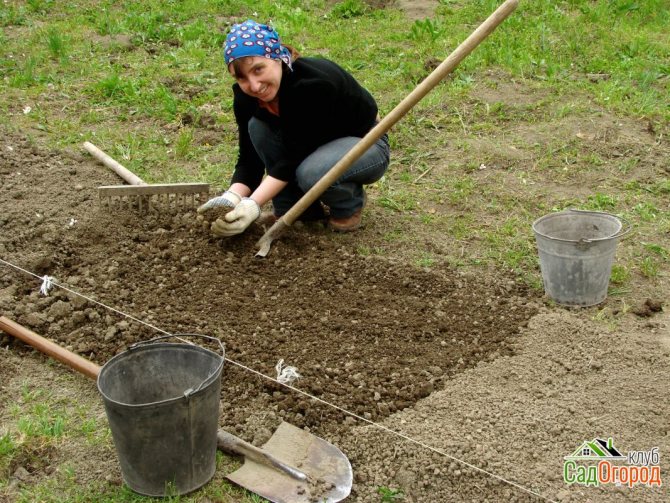

Almost all vegetable crops require replenishment. The soil treated by the cultivator is almost doubled, saturated with oxygen due to the holes and pores formed. This contributes to the emergence of humus from the decaying plant debris. Cultivation has a positive effect on root growth; due to the additional looseness, the root system grows in depth much easier.
Deep cultivation of the soil is worth doing every five years. Both a tractor with an additional set of attachments and a walk-behind tractor will cope well with this task. Mechanical processing significantly deepens the fertile layer and improves the saturation of the soil with water. This kind of work will be especially useful when growing any root crop.
It should be added that the soil of the southern regions needs in-depth processing. As for the northern ones, you can get by with a more superficial digging.
Soil fertilization
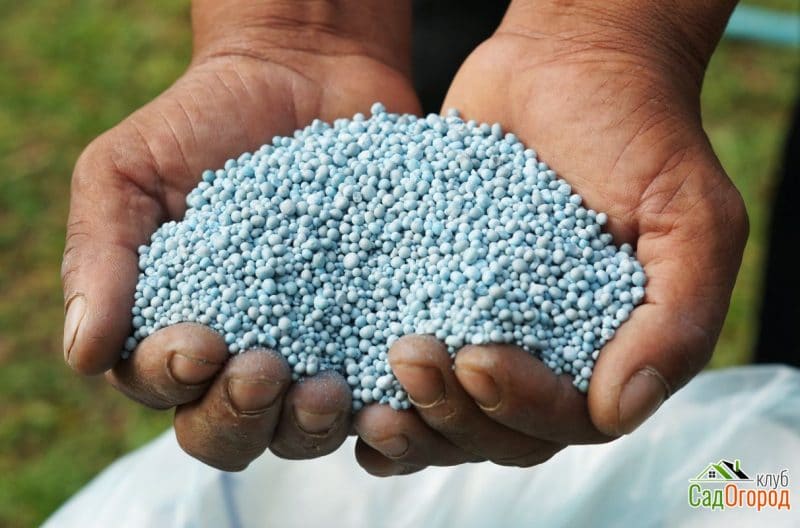

Don't underestimate the impact of fertilizer use on your future harvest. For effective mixing of fertilizers with a fertile layer, it is worth adding them to the soil while loosening. This contributes to the maximum penetration of crops to the root system in spring. At the same time, the quality of the soil is improved.
It is worth highlighting two types of fertilizers: mineral and organic.
Why do you need to dig the earth
The main task facing gardeners is the correct implementation of this stage of soil cultivation in the fall. For digging, you will definitely need a shovel. The land should be plowed at a depth of thirty to thirty-five centimeters. If there is a small layer of humus in the soil, then twenty cm will be enough.
Autumn tillage should be carried out as early as possible - even before the onset of stable cold days and before long rains. The fact is that otherwise, instead of loosening the earth, it will be trampled down and compacted, especially in clayey areas. Moreover, it is the latter that need measures aimed at increasing their fertility.
To this end, experts recommend digging such soil at a depth of about sixteen centimeters, and increasing it every year. It is very important to add sand and organic matter along the way in order to reduce the layer of clayey barren part and increase the percentage of the fertile part.
For heavy loamy soil, digging the soil in the fall should take place at a greater depth. In this case, it is necessary to introduce peat, sand, organic matter, which contribute to aeration and improve the structure. As a result, the "breathing" of the roots of crops will be facilitated.
What to make the planting mixture from?
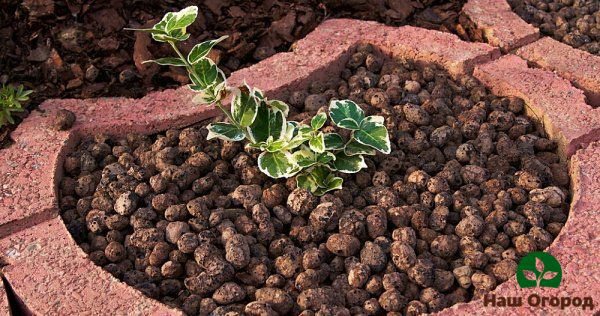

Flowerbed with the addition of expanded clay
The mixture for planting must contain components of organic and inorganic origin. The organic part is earthen, leaf, sod and vegetable mixture, peat, compost and humus. Additionally, you can use wood ash, grain husks, crushed eggshells. Inorganic part - pieces of foam and hydrogel, river sand, lime, expanded clay.
All crops have different soil requirements. The proportion of the components is prepared taking into account a particular plant.You can make a versatile mixture of garden soil, humus, peat and sand (2: 1: 1: 1). Sowing in humus without other components is strictly prohibited. Initially, the plants will grow very well and are pleasing to the eye, they have a very well-developed green mass, and the root system is poor, therefore, when transplanted, they take root very poorly.
Optimal soil composition for peppers, eggplants and tomatoes:
Peat, sand and vegetable mixture in equal proportions.
Sand, humus and garden soil (1: 1: 2). You can additionally add 2 glasses of ash to a bucket of such a composition, and for cabbage, you can also add a glass of lime.
Sand and earth must be sieved through a coarse sieve before preparing the mixture. This will help get rid of pieces of debris, some pests and their larvae. After that, the earth is disinfected.
Processing light soils in autumn
Such soil does not need to be dug too often. Since it is structurally atomized, and as a result, it becomes looser, the work becomes more difficult. If the top layer is fertilized too deep, then beneficial microorganisms die, and pathogenic pests begin to multiply in their place. In addition, abundant watering in dry weather leads to the rapid leaching of most of the minerals that are necessary to maintain the density of the soil structure, especially calcium. As a result, the physical properties of the soil deteriorate. Therefore, in order not to abuse it, it is still better to carry out only autumn tillage.
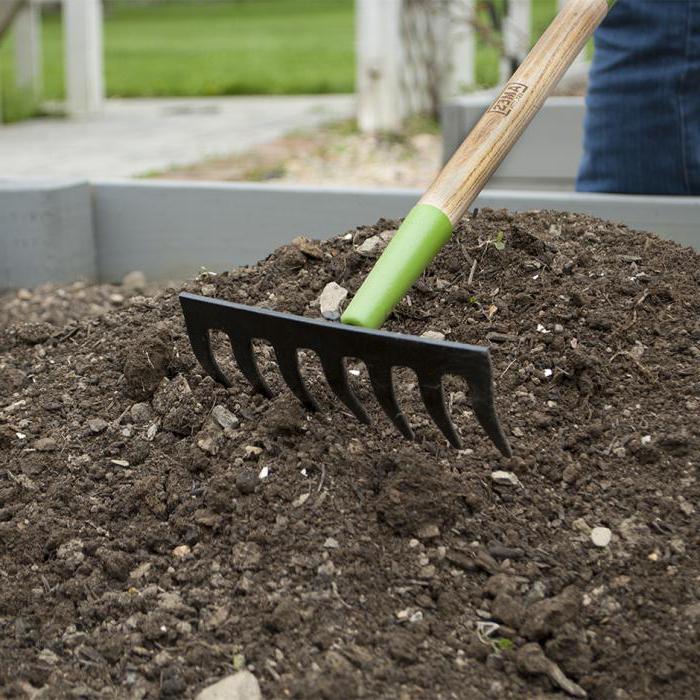

Autumn processing-plowing of the soil of the summer cottage
It may seem to someone that digging up the site is quite simple, but this is not so. This method of processing also needs to be carried out correctly. The manipulation can be carried out using a shovel, the digging depth in this case - on the bayonet of the shovel. If a special technique is used for plowing, then the plowing depth is about 30 cm.
In order for the autumn soil cultivation to be carried out correctly, several rules must be observed.
1. Work on the preparation of the land must be carried out before the time of autumn rains begins. Otherwise, it will not be possible to loosen the soil, since it, on the contrary, will be compacted, especially if it is clayey.
2. In heavy clay areas, it is necessary to increase their fertile qualities. It is recommended to dig such soil to a depth not exceeding 15 cm, but each season the depth should be increased by 2 centimeters. In addition, alumina requires the addition of sand and all kinds of organic matter. In this case, it will be possible to reduce the infertile layer and, accordingly, increase fertility.
3. When plowing a vegetable garden in the fall, do not break up large clods of soil. In this case, the earth in them will freeze better, that is, insects will have little chance of surviving the winter cold. In addition, under the influence of frost, large blocks will disintegrate on their own, and after the snow cover disappears, the soil will become loose.
4. Loams need deeper plowing, also processing includes the introduction of sand, organic matter, peat, that is, components that stimulate the improvement of the soil structure. In this case, oxygen will flow better to the plant roots.
5. The structure of clay areas can be improved by adding a large dose of granular sand (river sand, approximately 4-5 kg per square meter) during plowing. It is also necessary to "dilute" such soil with the same amount of peat crumb.
6. It is advisable to add crushed clay (only dry) to the peat soil in the fall, to which sand has been added.
7. If the soil is light and well processed, then it should not be dug up often. Otherwise, its structure will spray, it will become loose, that is, when working with it, difficulties may arise.With frequent plowing, the fertilized layer gets deep into the soil, all beneficial microorganisms contained in it die, and harmful microorganisms begin to multiply instead. Also, due to abundant irrigation in dry seasons, leaching of elements (including minerals) occurs, which are required to maintain the density of the earth's structure. As a result, the physical qualities of the soil deteriorate.
8. The cultivated soil, which has a loose structure, should not be dug up with a shovel. In this case, it is better to give preference to a garden pitchfork (or a hand-held cultivator "Tornado"). With their help, the top fertile soil will remain "in place", and the structure of the earth will improve. In addition, a garden pitchfork is an excellent means of controlling perennial weeds. If you remove the wheatgrass root from the ground with a pitchfork, it will not burst, but you can pull it out a little, freeing it from the ground. In this way, many roots can be pulled out.
9. If the site was filled with wheatgrass, then it is better to use the three-layer digging method. In this case, the middle layer will be at the top, and the top will be located at the bottom, and the bottom will take place in the middle. If it is planned to plant vegetables at this place, then it is necessary to apply fertilizers.
Fertilizers
Many gardeners make organic feedings on their own. To do this, they create compost heaps or pits, in which they put uninfected plants and substandard fruits, waste generated after cleaning vegetables or fruits, onion husks, droppings, spruce fallen needles, ash. Fertilizers that have matured over time are used during the preparation of the site before digging.
In the process of plowing the soil, it is also recommended to apply other organic fertilizers, for example, manure or compost. In this case, you should not go deep into the ground, otherwise the feeding will be less decomposed and poorly absorbed by the plants.
During the autumn digging, experienced gardeners introduce all the organic, phosphorus and potash fertilizers necessary for the future harvest; if necessary, clay and sand are also added. It should be borne in mind that manure must be used carefully. It is better to embed this organic fertilizer at a shallow depth, so that during the winter it can decompose and serve as a living environment for many beneficial microorganisms. Whereas in dense low layers of soil, it practically does not change the structure. It is recommended to use rotted cow or horse manure in the fall, so that by spring it is completely rotten in the soil due to looseness, moisture and the correct temperature of the earth.
During digging, humus and compost should be applied precisely to those areas where in the next season the gardener plans to grow melons, cabbage, celery, lettuce. Mineral fertilizers will be needed where radish, beets and carrots are to be sown. It is not recommended to add manure for these crops in the fall. Fresh droppings of birds or animals also cannot be brought in during digging; it is better to compost them first.
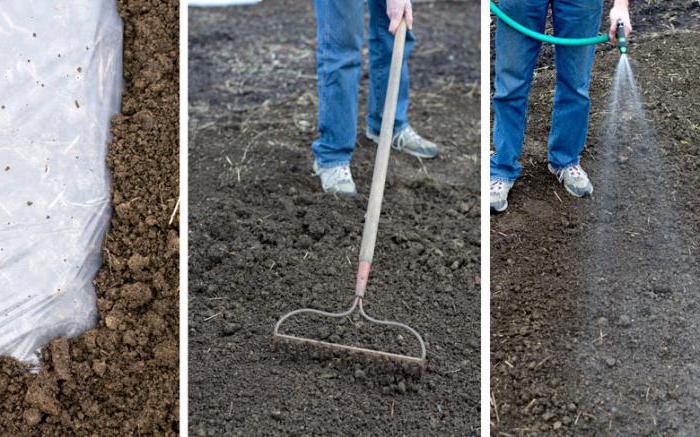

In the case when there is only a small layer of humus on the site, that is, the land is completely "poor", it is better to "feed" it in the fall. To do this, during digging, it is recommended to increase the dose of mineral fertilizers and organic matter, which is laid a little deeper. After that, the soil is carefully harrowed with a metal rake so that the fertilizing mixes well with the soil.
True or myth? Facts about the benefits and dangers of garlic
It's no secret that garlic has many health benefits, including boosting immunity, reducing inflammation, and cleansing the body. Garlic is called a powerful superfood ...
14 February 2020, 19:10


It is organic fertilizers that are preferred by supporters of natural farming.Among them, there is an opinion that the correct use of organic matter can completely replace the digging process, making it meaningless.
Such fertilizers include organic waste such as old boards, dry grass and branches, cardboard boxes, newspapers, magazines, all of which become ash after incineration. And she, as you know, exclusively fertilizes the soil.
Organic matter includes compost and manure, which can be collected all year round. It is not advised to buy it from hands.
Thus, it is possible to infect the soil with pathogenic microflora. Manure is mixed with sawdust or dry grass.
When digging, it is recommended to add this type of fertilizer directly to the beds where it is planned to plant cucumbers and cabbage. Based on a 1 mg bucket.
Mineral fertilizers, with the exception of nitrogen fertilizers, can be added to the soil for any crops. In this case, you need to dig up the earth to a depth of twenty centimeters.


Much depends on the type of soil. For example, on acidic soil, it is worth applying fertilizer with lime.
Fertilizers that contain potassium and phosphorus are considered universal. They are brought into the soil once every three years, provided that crops are grown on the site not annually.
Composting
Harvesting leaves a lot of plant waste. All of them are useful, except for diseased plants and weeds with ripe seeds. And this is a great opportunity to create a compost pit.
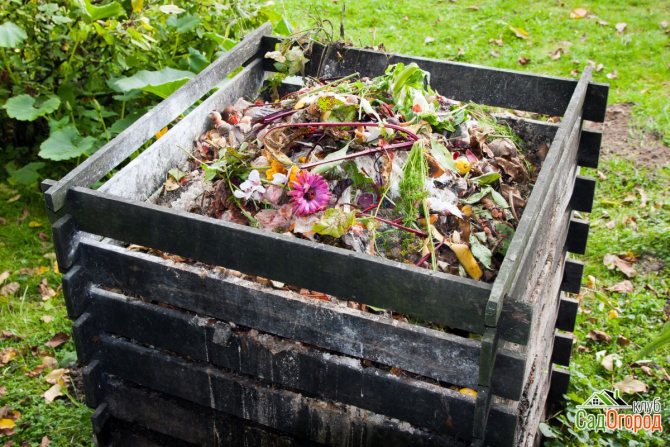

You need to start by making the pit itself. The first layer at the very bottom of the pit is laid with large dry branches and wooden boards. Organic waste of all kinds is placed on top of it. Parts of plant crops remaining after harvesting, food leftovers, and waste products will do.
The next layer will be falling leaves, then a layer of earth and poured on top with agents with effective microorganisms. These drugs are commercially available. The resulting layers are covered with waste paper. And the layering is repeated: organic waste, plant waste, foliage, soil and microorganisms.
A full compost pit is wrapped with polyethylene on top and left to ripen until spring. Compost will easily survive the coldest winter, and by spring the bacteria will have finished their work.
Sod treatment


The site, on which nothing was planted for a long period of time, is dug up in the spring using a moldboard method. Digging depth - ten centimeters. It is left unchanged for the whole summer. In the fall, repeat the digging with overturning a layer twenty centimeters deep. By this time, the weeds, once deep in the ground, should die. The plot is fertilized and the land is leveled.
In the spring of next year, the turfed area must be re-dug up, increasing the depth. By the onset of autumn, the site is cultivated to the entire depth of the fertile soil layer. By that time, the weeds and sod will die, and the soil is already considered reclaimed.
Soil mulching


Soil mulching is an indispensable process in natural farming. Mulching nourishes the soil with organic matter, improves fertility and prevents soil depletion. The ideal time for him is autumn. After harvesting, a lot of plant waste remains in the gardens.
Natural agriculture experts recommend not to remove the tops and unnecessary plant parts remaining on the ground. It is necessary to cover everything with dry foliage, grass or sawdust. Thick paper, cardboard or boxes are stacked on top. This will protect the land from frost, contribute to the enrichment of nutrients of organic origin.
Garden trees can also be fertilized with mulching. Except for the use of dry foliage and sawdust, rodents can settle there and damage the tree. Otherwise, the process is exactly the same.
Use of siderates
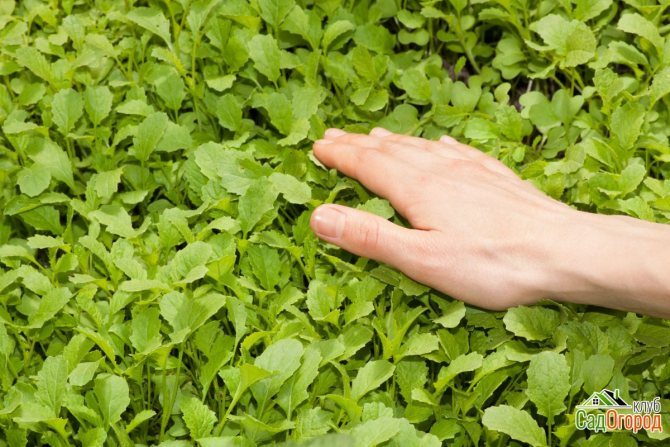

Siderata are annual crops that quickly grow green mass and have large roots. Due to the roots, the soil is naturally loosened. The green part of the plant has several uses: when mulching the soil, as an organic fertilizer and helps in snow retention.
This method is used when there is a lack of plant waste of natural origin for the manufacture of mulch. Sowing siderates helps to maintain a high level of productivity of vegetable crops, even when they are planted annually in the same area.
It is necessary to make sure that they are compatible with crops before using green manure. A special table will help with this. At the same time, crops planted on the site before and after sideration are additionally taken into account.
You shouldn't risk your harvest. If vegetable crops are incompatible with green manure, it may die.
Siderata do not require special attention to themselves. There is no need to transfer time and effort to instilling them. The elements necessary for soil enrichment are contained in the green mass, which will be processed by bacteria and earthworms.
Creating warm beds
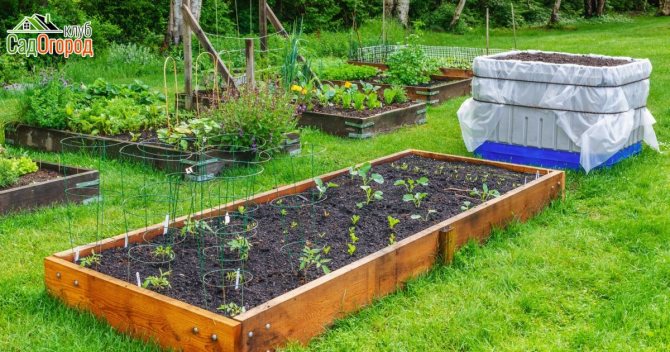

This activity will come in handy if you have an overflowing compost pit and a lot of organic waste. Then you can think about creating warm beds, they are also called organic trenches. Any waste of plant and animal origin collected on the territory of the site will be useful in the construction of such beds. The use of this technology will increase yields from year to year, providing crops with optimal conditions for growth.
The future harvest directly depends on the efforts of the gardener in the fall. It was then that the groundwork for the next season was created. It is worthwhile to take responsibility for preparing the soil for winter. In this, the supporters of natural farming and those who adhere to modern technologies and means agree with each other.
Read here how to prepare your lawn for winter!
Liked? Be sure to subscribe to us at,, Zen and
Liming
Land with a high level of acidity requires proper autumn cultivation. This indicator, as you know, negatively affects not only the yield, but also the growth of garden crops. The fact is that vegetables require a slightly acidic or neutral reaction. Therefore, the high level of soil acidity must be reduced in autumn. For this, the liming procedure is carried out once every five years. Calcium oxide is able not only to deoxidize the earth, but also to increase its fertility, improve air permeability, hygroscopicity, optimizing the structure due to the calcium content.
For liming, you can use chalk or hydrated lime, cement dust, as well as dolomite flour and ash - peat or wood. Their dose will depend on the degree of acidity of the soil, its structure and the amount of calcium content. Liming will be the result of the fact that the clay soil will be much looser, easier to handle, and in sandy soil moisture capacity increases and it becomes viscous. As a result, the most favorable conditions are created for the development of beneficial microorganisms and improving fertility.
Overworked soil and green manure
Autumn has come, gardeners have already harvested a crop of vegetables and began to think about how to restore the fertility of the land on the site. Few people know that overworking of the soil also leads to the occurrence of many diseases in plants. Signs of this problem are as follows: disturbed soil structure, when it resembles dust, as well as cracking crust after watering or rain. In this case, comprehensive measures are necessary for self-healing of the soil, since tillage in the fall from diseases is not a sufficient measure. In this case, siderates come to the rescue.These are plants that are grown on the site not for the purpose of obtaining a harvest from them, but for enriching the soil with organic and mineral substances, as well as for improving its structure.
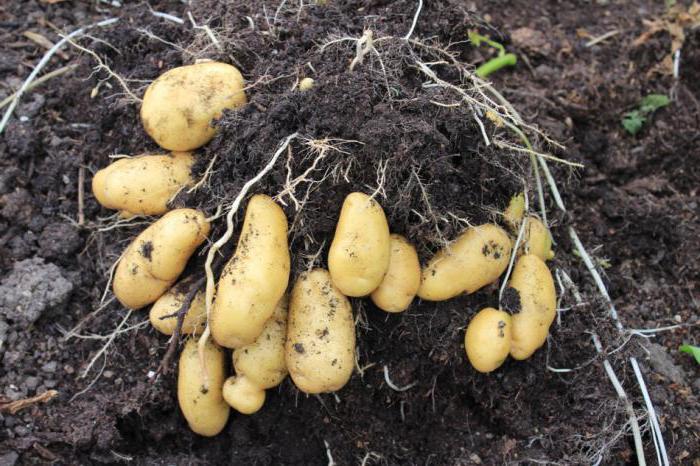

Vetch, rapeseed, lupine, vetch, clover, peas, mustard are often used as green manure. For fertilizing the soil in the fall, the latter is best suited. Moreover, mustard is able to accumulate nitrogen, phosphorus, potassium and many other trace elements that enter the soil. Green manure is also an excellent fertilizer. Plus, they increase the aeration and hygroscopicity of the earth, loosening it thanks to the branched roots. It is better to plant them in the fall, so that the green mass is formed before frost, but for several more weeks in the spring they will grow. If the weather is warm before mid-October, they can grow and even bloom. In this case, the ovaries should be trimmed.
How to get a good harvest of strawberries
Preparing the soil for planting strawberries includes site selection and soil cultivation. Lovers of this berry should know that such a culture will grow poorly on a sandy territory, since it has an upper root system, which in summer will simply overheat and dry out. On soil with a lot of clay, it is also problematic to get a good harvest, since the roots will not have enough oxygen. The quality of the soil can be improved by adding humus. It is better to prepare beds for strawberries, the height of which is 10 centimeters, and the distance between them is up to half a meter.
Pest control
In addition, green manure emit substances that are excellent insecticides. Today, it is very common to till the soil from pests in the fall with the help of mustard. It perfectly scares away the wireworm, bear and beetle larvae due to its root secretions. It is best to sow insecticides immediately after clearing the beds from fruiting crops. Experienced gardeners always monitor the condition of the soil in order to disinfect it in time. Otherwise, after the plant is damaged by a disease, it will be very difficult to get rid of it. There are several ways to deal with this problem. First, you need to know how to treat the soil from late blight in the fall. Most often, gardeners use chemicals, for example, a solution of vitriol. Moreover, the composition should not be too concentrated. To obtain the desired result, a one or two percent solution is sufficient. Another method is biological disinfection, when special preparations are introduced into the soil fifteen days before the first frost. For those who do not know how to treat the soil from phytophthora, in the fall, experienced gardeners recommend digging up the soil well, and then adding a solution of copper sulfate to it.
Autumn is the time for planting garlic
The autumn season is characterized not only by the preparation of the soil for the next season - this is the most favorable time for planting garlic and onions. The main advantages of sowing before winter:
- plants are naturally hardened in winter;
- earlier harvesting.
The optimal landing time is mid-October, but before the first frost. This time ensures that garlic will not sprout prematurely in the event of a short-term warming.


Soil preparation should be started a month before the planned planting and include all the necessary activities. Fertilizers (humus and ash) should be applied first, and then the earth is dug up. After 30 days, you can start sowing.
What to sow to improve the soil after potatoes
For the next season, one unspoken rule must be observed: do not plant nightshades in the same place. After harvesting potatoes, strawberries or tomatoes, they must not be sown in the same soil for at least three years. In cases where the site is small enough, the task of gardeners becomes more complicated. They have to solve the problem of what to sow after potatoes.To improve the soil, you can plant green manure plants: phacelia, mustard, oats, lupine, etc. Legumes help enrich the soil with nutrients and nitrogen. Mustard is a reliable barrier for the wireworm who loves to feast on potato tubers. To obtain the maximum effect, the planting of green manures can be combined with the introduction of organic fertilizers.

